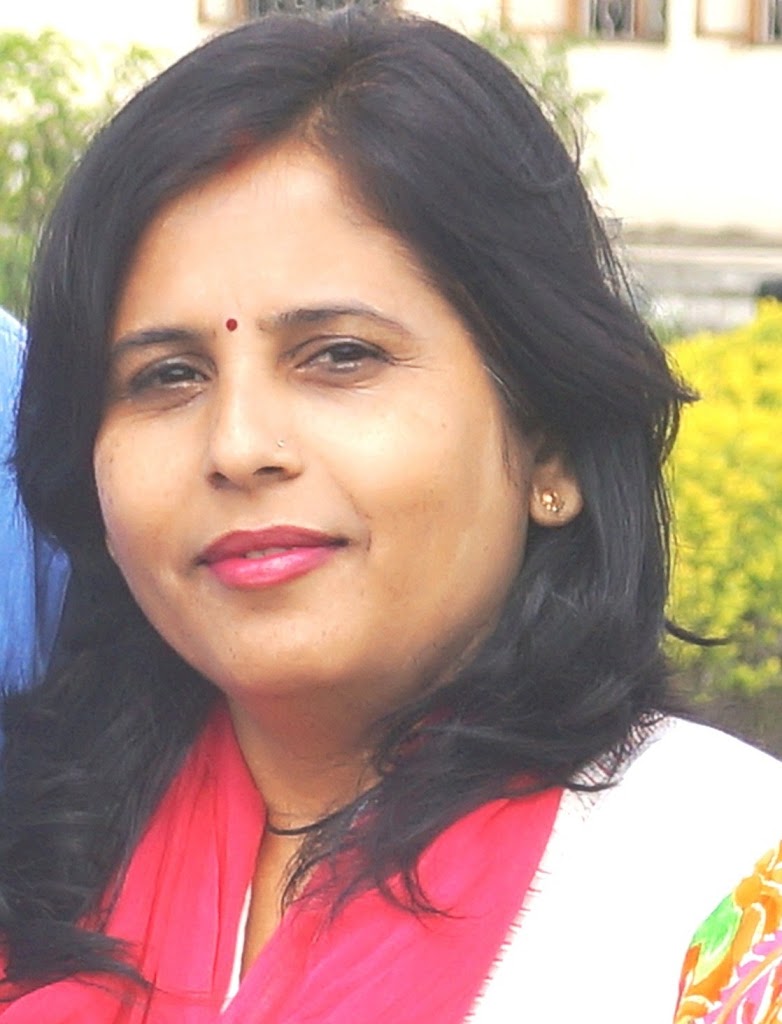Dr. Goma Devi Sharma (Adhikari) (Published in Gorkha times in 2020)
By launching his epic Sabari in the mists of many books pouring with themes of women’s dignity, honor and existence, poet Rewati Raman Timsina has exhibited his progressing outlook. Since this epic has compromised with certain trains of an ideal epic prescribed in the epic tradition, some critics are reluctant to call it an epic proper. The reluctance, however, is baseless because with the change of time, and coming in of newer approaches to deal with the world, the old standard need not always be the yardsticks to judge modern creations. Instead, it will be worthwhile to analyze the values embedded in the work.

Viewed on the basis of these facts, Sabari by Rewati Raman Timsina is out and out an epic. Its division into various cantos, presence of a formidable protagonist, a clear, linear plotline encompassing a time from life to death, description of nature, and such other characteristics are present in it. Sabari, the protagonist of the epic, is a devoted hero, and the epic describes her entire life, from birth to her demise. The storyline is divided into 17 cantos, and nature has been described in a figurative language, in accordance with time and context. If viewed metrically, it may not be a perfectly metrical epic; instead, it consists of rhymed lines. Therefore, there is no question of alleging it to have tempered with metered lines. We can say, it has borrowed from the metrical tradition, for meters like Shikarini and Anustup are emulated, at least in their rhythm, by almost all the epics written in the Eastern poetic tradition.
- Plot
As described in the Ramayana, Sabari, the poor Bhilla woman, has been waiting to have an audience with Lord Rama for ages. When one fine day, Lord Rama stands before her in reality, she is overwhelmed, and out of great devotions, she serves him tasted berries, to ensure that her much awaited Lord gets only the sweetest of the fruits. The Ramayana discussed nothing more than this about Sabari. It indeed is an extraordinary power on the part of a poet to be inspired by such a brief story, and write a full-length epic. It also exhibits the faculty of research in him. The story also discusses in length the setting in Bharatbarsha, mores and practices of the Bhillas, Sabari’s childhood days, her marriage, her migration from home, her refuge as the disciple of Sage Matanga, her audience with Lord Rama, the description of the Navadha system of devotion, Rama’s blessing on Sabari, the permission to abandon her physical existence as willed, the rendering of her body into ash in flames etc. constitute the major plotline. The story proceeds in a descriptive style. Its capacity to keep the readers bound, and their curiosity intact is a significant characteristic of the epic.
2. Characters
Sabari, the daughter of a Bhilla, is the protagonist of the epic. Born to a Bhilla family living in the forest of Dandakaranya, Sabari is quite shrewd right from her babyhood days. She is curious and bright, asking several questions to her father all the time. Besides being inquisitive, she also loves animals very much. She rebels against the practice of animal slaughter and meat eating prevalent in the Bhilla community. When she comes of age, her marriage is set. But she is unhappy, considering the practice of animal sacrifice undertaken during wedding ceremonies. As rebellion, she leaves her home and moves elsewhere. Enduring several spells of hardship, young Sabari arrives at the ashram of Sage Matanga. She stays there, learning, meditating, and waiting for an audience with Lord Rama. Finally, after having accomplished her mission, she abandons her body there. This way, Sabari has been depicted to be a rebellious, animal-loving, and a morally upright character.
Sabari’s parents, friends, Sage Matanga, Lord Rama and others are minor characters who contribute to the forward motion of Sabari’s story.3. Setting
Since the story of Sabari is borrowed from mythologies, the exact time of the story is unknown. The description of the locations appears here and there as the habitat of the Bhillas and the forest of Dandakaranya. As for example, the following verses indicate the location of the story:
Trees with immense beauty in Dandakaranya appear
Pristine woods, gardens and ponds, worthy to admire
The Bhillas appear in the groves, both men and women;
Hunting for meat, they are seen in diverse locations. (page 1)
The poet has made a beautiful description of the location and environment of the Bhilla’s settlement. He has also made a captivating description of the site of meditation inside the forest. He has artistically handled the description of the external and internal environments. Through his words, he is successful in foregrounding the mental status of Sabari in front of his readers:
Says to herself, if I marry, the meek will get slaughtered They would survive if my wedding is for reasons cancelled
I won’t marry at any rate; I make such a pledge;
I leave home and become homeless! Lord, I’m in your refuge! (p. 21)
In the same way, there are occasions when low ebbs infect Sabari’s thoughts. She sometimes considers her own steps sinful. The poet has presented her spiritual conflict in a beautiful language:
I went sinning like rogues; an accursed sinner I am
Which crime has yielded this; why I am enduring shame?
Friends have left and kiths are gone; I am much defamed
Meanings have transpired; all labor has gone in vain.
4. Motif
It is an old practice to write literature, featuring minor characters from scriptures, appreciating their existence. There are writers who have written long volumes, featuring minor scriptural characters like Karna and Urmila as protagonists. Sabari, the epic, is a book of the same fashion that gives continuity to such a tradition. By writing this epic, the poet has manifested his progressive worldviews. Exhibiting all aspects of Sabari’s life before the society is not the only motif of this epic. The poet has also attempted to foreground the absurdities prevalent in our society.
5. Style
On its surface, the epic in discussion looks like a metrical work. But when observed minutely, it has compromised with rules of prosody in many instances. Yet, there are traits of classical meters like Shikharini and Anustup. But we don’t find the entire epic adhering to any strict metrical rule, though there is ample presence of Shikharini and Anustup meters. At any rate, the poet has maintained rhymes in almost all the verses.
Since it is an epic, the poet has made ample use of rhetorical devices to make the presentation lively. There are many instances of alliterations, metaphors, repetitions, personifications, imageries and such other devices. As for example:
Crown decked with peacock features, brilliantly gleaming
Leaders decked in many forms, readied for the meetings! (p. 3)
In the Nepali verse, one can notice the repetition of /m/ sound in the first line, with the use of words like mutuk, mastak, mayur etc., giving rise to musical alliteration.
In the same way, we can consider the line: “Where, why, how and in which matter?” (p. 6). This line also makes good use of alliteration, with the sound /k/ in Nepali, and incidentally, the /h/ sound appearing in the English translation of the line.
Personification
Time rolls on its own accord, cyclic is its troupes
Touching nature with its hands as rain and dewdrops. (page 9)
These lines make a wonderful use of personification. In them, time-cycle, rain and dewdrops have been personified. In the same way, the following lines can be cited:
Since the Sun God would wake up and rise from the east
Nature may draw all the time, curtains just for him
Making the east gaily crimson and the face so rosy
It prepares to hail the Sun God, bathed in showers dewy. (p. 26)
At many places, the poet has made use of an extremely figurative language. Such words enable a picture to pose itself before the eyes of the readers. This way, the poet has proven that he is quite skilled in making imagist expressions. Here is an instance:
Rosy tinge had surmounted on the Bhilla woman
Hands were slender; fingers added to her acumen! (p. 9)
In the same way, the poet has made enough use of other figures of speech.
Images
Wonder it was: a flame, from a pyre rose upward
Flying higher to the sky, slowly getting dispersed. (p. 127)
6. Language:
The language used in the epic Sabari is comprehensible, natural, and easy Nepali. We can notice that the author has picked words and dictions to suit the disposition of the characters. The epic also has words derived from Sanskrit, but that does not impede the comprehensibility of the epic. Even in the use of words, the poet has exhibited his linguistic capability. He has also made good use of onomatopoeic words:
With water filled to brim, she giggled with her friends
And got all her frock and her loin drenched. (p. 56)
7. Word Choices
- Tatsam (Sanskrit words):
Sanskrit words like Brahma muhurta, pratah, kritya, shwan, saumya, pipasa, kuktuk, panigrahan, payodhara, Krishna–kaya, bharyata, etc have occurred amply in the epic. There are locations where the poet has also tempered with the forms of the words in order to maintain the rhyme scheme. Examples are ‘basati’ for ‘basti’, ‘saaugat’ for ‘saugat’, ‘samadarashi’ for ‘samadarashi’, ‘srajinchhan’for ‘sirjinchhan’, and ‘asukhi’ for ‘dukhi’. But this cannot be considered an anomaly, because poets have been found doing this for stylistic effect in poetry.
- Dialogic form: Much of the epic is written in a descriptive style. Dialogues have also been amply used to push the story ahead:
One of the girl friends says, “My friend, you are quite lucky!”
For, you are getting as your mate, the best of the buddies! (p. 14)
***
Untouchable I am by caste, how a Bhilla should stay back?
The Brahmans and the sages take penance with the greatest faith!
A Shudra I am, low and weak; what should I do, going there? (p. 29)
***
Sabari, our moment to meet the great Lord is at hand
See how a wave of joy is mounting on every one! (p. 87)
This way, the epic Sabari, is an extremely well-made epical work. Its focus on women’s dignity and honor makes its theme quite poignant. The themes of animal love, denouncement of animal slaughter, and a call for compassion for them are salutary. There also is a manifest theme of rebellion from Sabari against wrong practices and traditions. Social issues like caste-system, untouchability, hatred of women and gender discrimination are associate themes of the epic.Offering popular women’s necklaces such as pendants, chokers and chain necklace. Shop for jewelry in a variety of metals and gemstones to suit any occasion
[Dr. Goma Adhikari, a Hindi graduate from Manipur University, holds a gold medal for being first-class first in BA (Hindi Honors), and another gold medal for being first-class first in MA (Hindi). She is also a post-graduate in Nepali literature from Guwahati University. Her seminal works in publication include Bharatiya Nepali Sahityako Vishleshanatmak Itihas, the analytical history of Nepali Literature in India, Nepali Bhasha ra Sanskriti and Manipurma Nepali Sahitya: Ek Adhyayan.



cheap female viagra pills